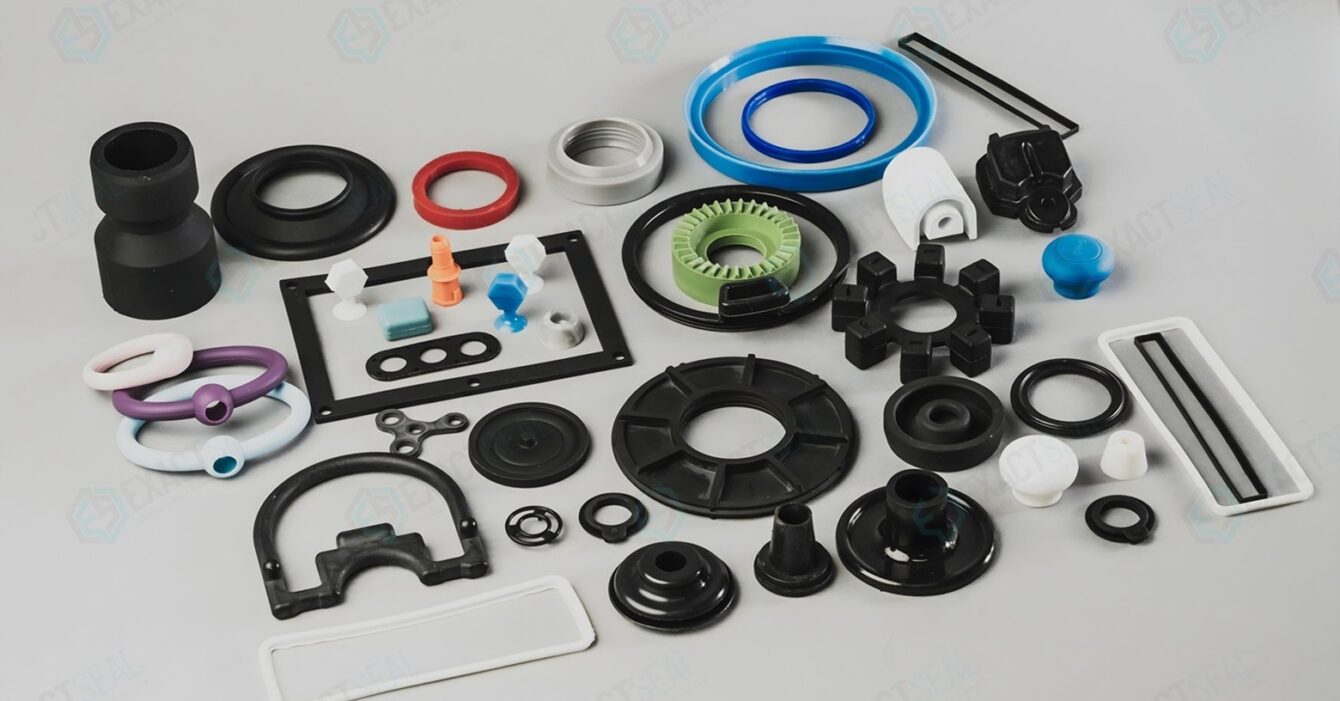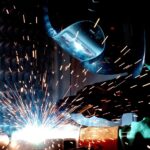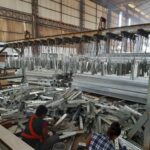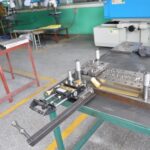Understanding Different Rubber Types
When diving into the world of rubber manufacturing, it’s essential to understand the various types of rubber available. Each type has unique properties that make it suitable for specific applications. Here in this section, we will be discussing various types of rubber, their properties and applications in the rubber molding processes.
Natural Rubber: The Classic Choice
Natural rubber, derived from the latex of rubber trees, is one of the oldest and most versatile materials used in rubber base molding. It is characterized by high tensile strength, elasticity and abrasion resistance; this makes it suitable for use in areas where the product is required to have high durability and flexibility. It is widely used in making car components, industrial equipment, and even in everyday products as rubber bands and shoes. Natural rubber has to meet certain tensile strength and elongation to be qualified as per ASTM D412 standards.
Natural rubber is preferred in rubber molding applications because of its ability to stretch and its tensile strength. For example, natural rubber is used in the production of molded rubber seals and gaskets for automobiles and industries. The fact that it can be stretched and compressed many times without changing its shape is very useful in such applications.
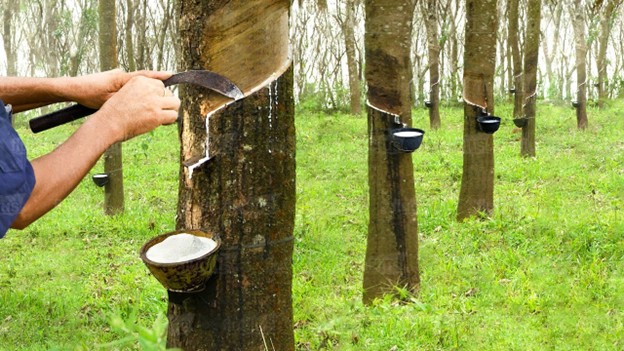
Synthetic Rubber: The Modern Marvel
Synthetic rubber encompasses a variety of man-made materials designed to mimic or improve upon natural rubber’s properties. Some popular types of synthetic rubber include:
- Styrene-Butadiene Rubber (SBR): Often used in car tires due to its excellent abrasion resistance and aging stability.
- Nitrile Rubber (NBR): Ideal for applications requiring oil and fuel resistance, commonly found in automotive and aerospace industries.
- Ethylene Propylene Diene Monomer (EPDM): Known for its superior weather, ozone, and heat resistance, making it perfect for outdoor and automotive applications.
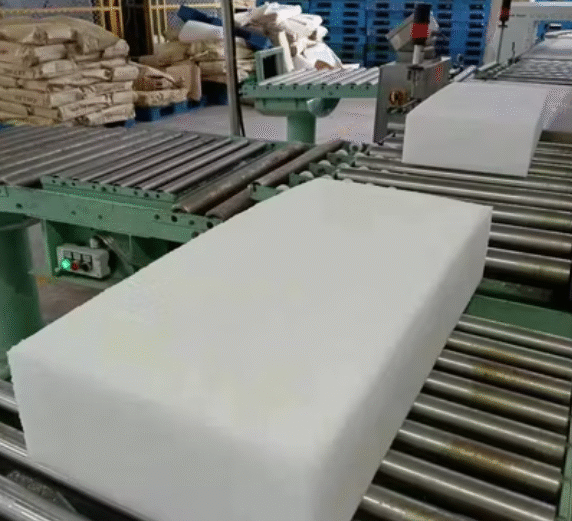
Testing and Standards in Rubber Manufacturing
In rubber manufacturing, quality and performance of the rubber material is of paramount importance. It is crucial to follow the standards and specifications, like ASTM D2000 for classification and quality control. These standards outline the physical and chemical properties that rubber must meet, including tensile strength, elongation, hardness, and compression set.
For instance, when developing a rubber mold for a high-performance automotive component, engineers need to make sure that the material used has the right hardness and tensile strength to be able to handle the forces that are likely to be exerted on the part in normal use. These testing standards are very rigirous to make sure that the final product is going to work well and is safe.
Engineering Example: Technical Analysis of EPDM Rubber in Automotive Door Seals
EPDM (Ethylene Propylene Diene Monomer) rubber is used commonly in automotive door seals because of its environmental stability and high elasticity. Here is a closer look at why EPDM is the right material for this application and the standards that govern the material.
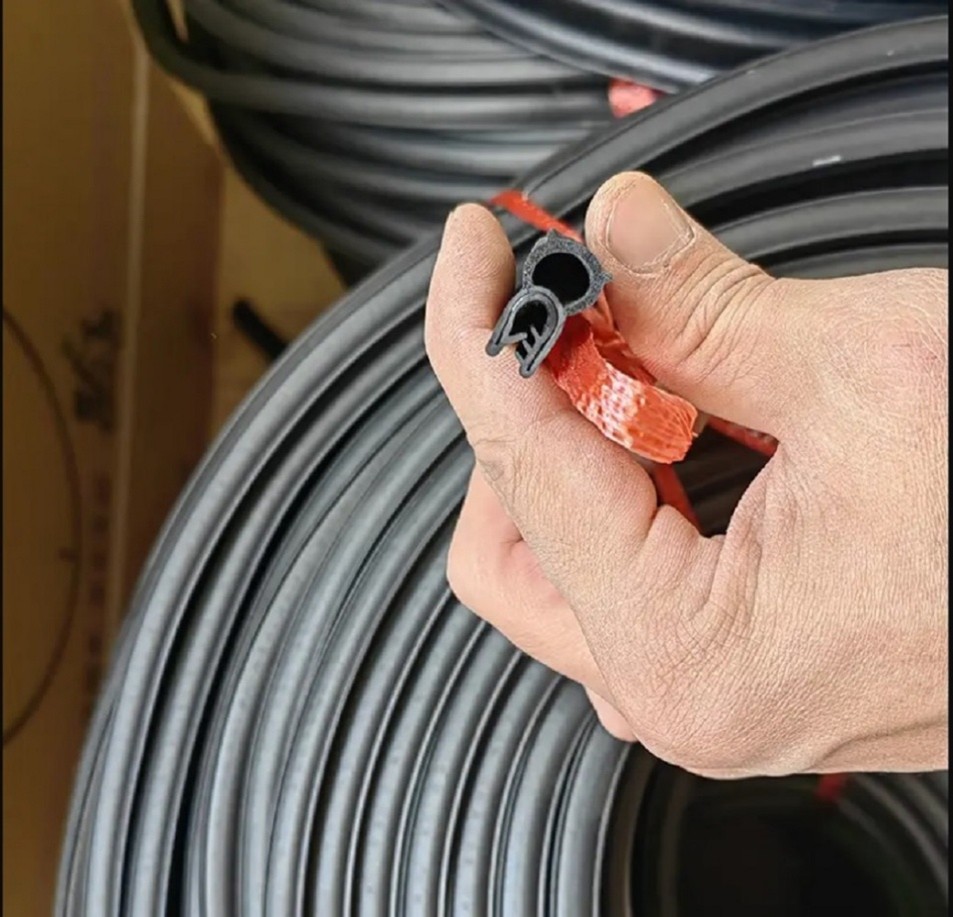
Material Properties and Performance
- Weather Resistance: The molecular structure of EPDM is based on ethylene and propylene, which are saturated, thus offering excellent resistance to weathering, ozone, and UV radiation. This is particularly important for door seals that are likely to be in contact with the environment. EPDM rubber manufacturers design these seals with a diene component that enables vulcanization and improves the sturdiness and stability of the final product. Rubber parts manufacturers rely on these properties to ensure the durability and effectiveness of EPDM door seals.
- Flexibility and Compression Set: EPDM has good wide temperature flexibility (-40°C to 150°C) which is important for door seals that have to compress and return to their original shape many times. It also has low compression set, which means that it will retain its shape and sealing capacity after being compressed for a long time so that the seal will remain effective throughout the life of the vehicle.
- Chemical Resistance: EPDM does not degrade with water, steam, alkalis and some acids, and is not affected by road salts, detergents and other chemicals. This increases the life cycle of the seals and in turn cuts on the maintenance expenses.
Engineering Standards and Specifications
SAE J200: This standard is used to categorize rubber materials depending on the characteristics and their performance. EPDM is under the “M” category of general-purpose elastomers, and must have tensile strength, elongation at break, and hardness that are within a specified range to make sure that there are no issues with batch-to-batch and supplier-to-supplier variability.
ASTM D2000: This standard gives the procedure for describing rubber materials according to the application and the conditions to which they will be subjected. In the case of automotive seals, the EPDM needs to have temperature resistance, compression set, and tensile properties that conform to ASTM D2000 to be able to handle automotive stress.
Manufacturing and Quality Assurance
Extrusion and Molding: EPDM door seals are commonly made by means of extrusion. EPDM rubber manufacturers extrude the material into continuous profiles by heating, then cutting to size and joining to make complete seals. These profiles have to be produced to exact dimensions as required by design engineers, ensuring precision in rubber manufacturing.
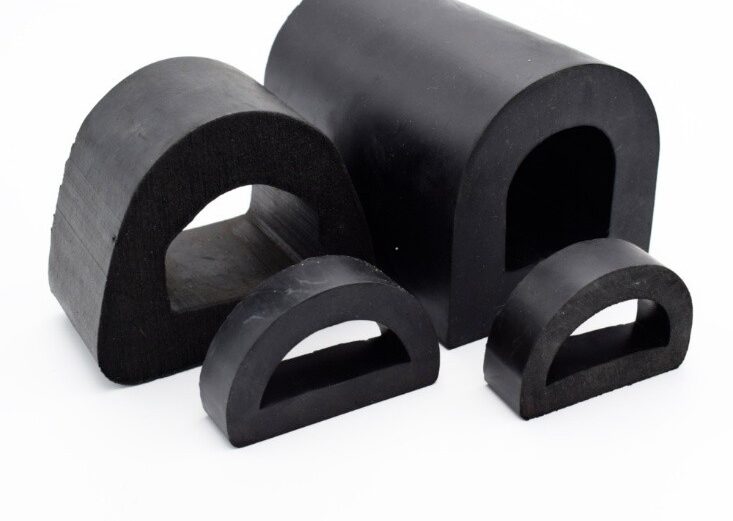
Adhesion and Bonding
EPDM seals often incorporate features like flocking or adhesive coatings to enhance sealing performance. Flocking, the application of fine fibers to the seal surface, reduces friction and noise when doors are opened or closed. Adhesive coatings ensure firm bonding to the vehicle body, preventing detachment or leaks, a crucial detail that rubber manufacturing companies prioritize.
Beyond natural and synthetic rubber, there are specialty rubbers designed for niche applications. These materials offer unique properties that make them suitable for specific uses:
- Silicone Rubber: Known for its excellent heat resistance, flexibility at low temperatures, and biocompatibility. It’s often used in medical devices, cookware, and electronics.
- Viton (FKM): A type of fluorocarbon rubber with exceptional chemical and heat resistance, commonly used in fuel system seals and gaskets.
- Neoprene (CR): Offers a good balance of oil, chemical, and weather resistance, making it ideal for various industrial and automotive applications.
Practical Applications: Silicone Rubber in Medical Devices
Silicone rubber’s biocompatibility and flexibility make it a popular choice in medical device manufacturing. For instance, silicone rubber manufacturers use it to create molded rubber components like catheter tubes, gaskets, and seals. These components must meet strict FDA standards for biocompatibility and performance, ensuring they are safe for use in medical applications. Silicone’s ability to withstand sterilization processes and maintain its properties at varying temperatures makes it invaluable in this field.
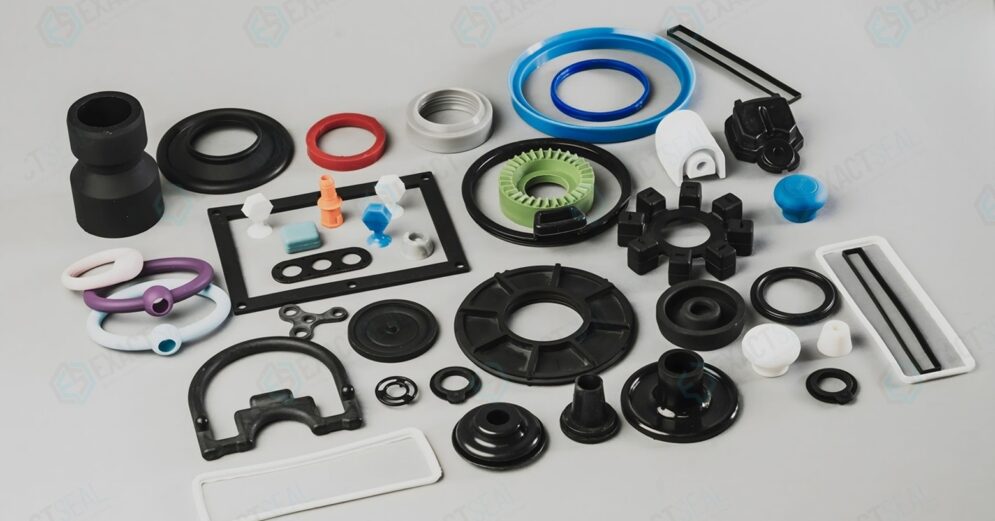
Environmental and Stress Factors
Environmental and stress are the most important factors when it comes to rubber molding to be able to attain the best performance and durability. Now let’s look at how these factors affect rubber base molding, rubber trim molding, and rubber floor molding.
- Weathering and UV Resistance: Weathering and UV stability are critical since rubber products are generally used outdoors. For instance, rubber base molding used in outdoor application is subjected to sunlight, rain, and other environmental conditions. EPDM rubber is widely used in such applications due to its excellent resistance to weather conditions. Its molecular structure is saturated by ethylene and propylene and this makes it to be resistant to ozone and UV radiation. Thus, rubber manufacturing following standards such as ASTM D1171, guarantee that the rubber products will not degrade over time due to exposure to environmental conditions.
In real-life use, consider a rubber strip that surrounds the window of a car. This molding must resist fading and cracking despite constant exposure to the sun. Engineers design these components to meet specific performance criteria, ensuring they remain flexible and functional throughout their lifespan.
- Chemical Exposure and Resistance: Rubber products are usually exposed to different chemicals that can affect their properties in one way or another. For example, rubber floor molding for industrial use may come in contact with oils, solvents and cleaning chemicals. Selecting the right rubber compound, for instance Nitrile (NBR) that has the ability to resist oil, will also increase the product’s durability. There is standard such as ASTM D2000 that help in categorizing rubber materials depending on their chemical resistance so as to get the right quality and performance.
Reflect on the use of rubber floor trim molding in a workshop setting. It has to be chemically inert and withstand wear and tear especially from people walking on it. Thus, testing these products against these standards can help rubber manufacturers ensure that their products are durable and reliable.
- Mechanical Stress and Flexibility: Another parameter that plays an important role in rubber molding is mechanical stress. Rubber base molding and rubber trim molding are some of the products that should withstand the force of bending, compression, and stretching without getting deformed or losing their usefulness. These applications include typically include silicone rubber, which has very good flexibility and compression set. Compression set test as per ASTM D395 is useful in determining how much a rubber product can regain its original shape after being subjected to pressure for a long time.
Just think about the rubber floor molding in a frequently used area. It has to endure the daily wear and tear in the form of people walking on it and still be able to retain its form and purpose. Engineers use precise specifications and grades to ensure that these moldings perform as expected under mechanical stress.
- Temperature Extremes: Temperature changes are another factor that is often applied to rubber products which in turn influences their efficiency and durability. For example, rubber base molding in a refrigerated warehouse must remain flexible and functional at low temperatures. Conversely, rubber trim molding around an engine compartment must withstand high temperatures without degrading. Standards like SAE J200 classify rubber materials based on their temperature resistance, ensuring they meet the required specifications for different environments.
For instance, think of rubber floor molding that is installed in a cold storage company. It has to remain flexible and work efficiently even when the climate is extremely cold. If the right rubber compound is chosen and the set standards are followed, then the products can be made to work efficiently in extreme conditions.
- Abrasion and Wear Resistance: Wear and abrasion are important characteristics for rubber products that are used in areas with friction and impact. Rubber floor trim molding in busy areas, for example, must resist wear and tear to maintain its appearance and functionality. EPDM rubber, with its robust wear resistance, is a common choice for these applications. Other test methods such as ASTM D5963 for abrasion resistance are used by rubber manufacturers to determine the suitability of rubber products.
Think of the rubber base molding in a commercial kitchen. It undergoes constant cleaning, movement of equipment and people traffic. These moldings are engineered to fulfill certain abrasion resistance standards, so they do not wear out as fast and need replacement more often.
In high-stress environments like commercial kitchens, materials such as EPDM (Ethylene Propylene Diene Monomer) or nitrile rubber are often chosen. EPDM is renowned for its excellent resistance to weathering, ozone, and a wide range of chemicals, making it a robust choice for areas exposed to harsh cleaning agents. Nitrile rubber, on the other hand, is known for its superior abrasion resistance and durability, ideal for withstanding the constant wear from equipment movement and foot traffic.
- Formulation – The formulation of the rubber compound is just as important as the base material. This involves adding specific fillers and additives to enhance the rubber’s properties. For instance, carbon black is often incorporated to improve abrasion resistance and tensile strength. Silica fillers can also be used to increase durability and reduce wear and tear.
Vulcanization, a process of adding sulfur or other curatives, enhances the elasticity and mechanical properties of the rubber, ensuring it can withstand continuous stress without cracking or losing shape.
To guarantee the quality and performance of rubber base molding, rubber manufacturers adhere to stringent industry standards. The ASTM D395 standard for compression set testing is used to assess how well a rubber product can recover after prolonged compression.
Additionally, abrasion resistance is tested according to standards like ASTM D5963. This test involves subjecting the rubber to a controlled abrasive action and measuring the wear.
- Moisture and Water Resistance: For instance, rubber floor molding in bathrooms or wet areas must be water-resistant to prevent mold growth and maintain hygiene. Chloroprene rubber (CR), known for its water resistance, is commonly used in such applications. Standards like ASTM D471 for water absorption testing ensure that rubber materials meet the necessary specifications for moisture resistance.
Balancing Performance and Cost
Whether you are an experienced engineer or just interested in the topic, it is useful to know this balance to make the right decisions.
Choosing the Right Material
The process of identifying the materials to be used in production is the first step in the process of minimizing the cost while at the same time maximizing the performance of the product. There are various types of rubber depending on the application it is used for. For example, EPDM rubber is good for weathering, and nitrile rubber is good for oiling. But how do you make this choice?
Rubber t molding and rubber corner molding often require materials with specific properties. For instance, EPDM is used due to its high resistance of outdoor environment. This material can be a bit expensive at first but in the long run it is cost effective because it does not require frequent replacement. Parts from latex rubber molds are another example, often used for their flexibility and ease of use. They may not be as durable as other rubbers and therefore their long-term cost effectiveness may need to be considered.
Manufacturing Techniques and Their Effects
The method of rubber manufacturing can influence the cost and performance of the product in a very special way. All three processes of compression molding, injection molding, and transfer molding have their own advantages and disadvantages. Compression molding is usually cost effective and less complex thus preferred for large simple parts. The molds employed in compression molding need to be created to specific requirements and standards, such as ASTM D2000.
Injection molding is a little costly in the beginning but is more accurate and uses less material. This method is suitable for rubber molding parts that have intricate designs since it is precise. For example, rubber parts manufacturers employ injection molding to produce complex rubber parts for different industries since they are durable and rarely require replacement.
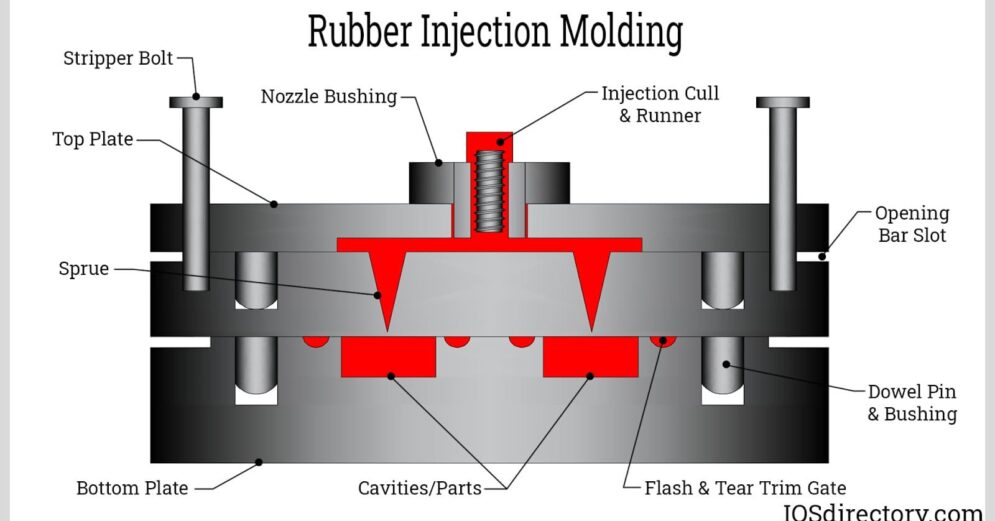
Adhering to Industry Standards
Adherence to standards means that rubber products conform to certain performance characteristics. It is important for gasket manufacturers to follow standards such as ASTM D1056 that deals with cellular rubber materials. These standards define characteristics like compression deflection and tensile strength, so the gaskets will work properly when under stress.
Automotive rubber moldings are required to have certain characteristics like the SAE J200 classification of rubber. When rubber manufacturers follow these standards, they can be sure that their products will work well in the conditions that are characteristic of automotive applications. This compliance not only assists in performance but also supports in controlling the cost by minimizing the probability of product failure and costly recalls.
Customization and Its Benefits
Customization in rubber molding can sometimes seem like an added expense, but it often pays off in performance. Rubber moldings are made to order to suit the requirements of the application in which they are to be used. For example, a rubber parts manufacturer can create custom gaskets that fit perfectly into unique machinery, preventing leaks and enhancing performance.
By investing in custom rubber molding tooling, rubber manufacturing companies can address specific challenges and improve the longevity of their products. While the initial cost may be higher, the long-term benefits of enhanced performance and reduced maintenance costs make customization a worthwhile investment.
Testing and Validation
This is a crucial aspect since testing of rubber products is important in ascertaining their performance. Rubber moldings are subjected to different tests including compression set test (ASTM D395) and tensile strength test (ASTM D412). These tests assist a rubber parts manufacturer ascertaining that the rubber parts will work as designed under various conditions.
Real-World Applications and Case Studies
Automotive Excellence: Rubber Base Molding at Work
In the automotive industry, rubber base molding is crucial for vehicle durability and comfort. Think of the rubber like trim that is used around car windows and doors. These rubber moldings give a good fit that allows no wind, rain or noise to penetrate thus making the driving experience better. These rubber moldings are engineered to conform to standards such as ASTM D2000, so they do not break down when exposed to the elements or used constantly.
Consider a leading car manufacturer that improved their vehicles’ noise insulation by using high-quality rubber moldings. By switching to advanced rubber formulations, they reduced cabin noise by 30%, leading to higher customer satisfaction. Their rubber manufacturers opted for a formulation that enhances damping properties, reduces vibration transmission, or improves sound absorption characteristics. This involved using materials with higher damping factors or incorporating specialized additives that dampen sound waves effectively. This real-world example shows how rubber molding can significantly enhance product performance and customer experience.
Industrial Strength: Rubber Floor Molding in Heavy Duty Application
Rubber floor molding is essential in heavy-duty industrial settings where durability and safety are paramount. Imagine a large area of a storehouse where trucks, pallets, and other large equipment are in operation. Rubber floor trim molding acts as a barrier that shields the walls and the floor from any form of damage and also makes the working environment safer by minimizing the number of accidents that may result from slips and falls.
A rubber manufacturing company provided custom rubber molding for the floor of a large distribution center. The outcome was a decrease in the amount of floor damage and the expenses connected with it.
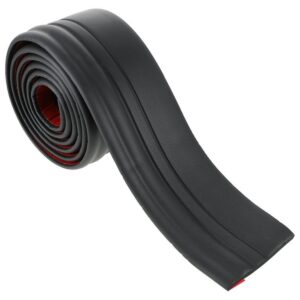
Architectural Applications: Rubber Crown Molding
Rubber crown molding is a type of molding that is used in architectural designs since it is ornamental and has practical uses. This molding can look like a standard wood or plaster molding but will be more flexible and resistant to moisture and pests. Rubber crown molding is ideal for restoration projects of historical structures where the appearance of the building has to remain authentic, but modern-day durability is needed.
A well-known hotel chain utilized rubber crown molding in their high-end rooms; they preferred this because it is easy to install and clean. The moldings complied with ASTM F963 safety standards so they were safe and non-toxic to hotel guests.
Consumer Goods: Rubber T Molding in Furniture
Rubber T molding is commonly used in the furniture industry since it can be used to protect edges and corners of tables, counters and other structures. This molding not only adds a sleek finish but also prevents chipping and damage, extending the life of the furniture.
A furniture manufacturer that deals in products used in areas that experience high traffic like restaurants and hotels incorporated rubber T molding into their products. They ensured that their furniture met the American National Standards Institute/Business and Institutional Furniture Manufacturer Association standards of safety and durability and that the furniture could be used intensively and frequently without losing its appearance. Customers praised the durability and sleek design, demonstrating how rubber T molding enhances both form and function.
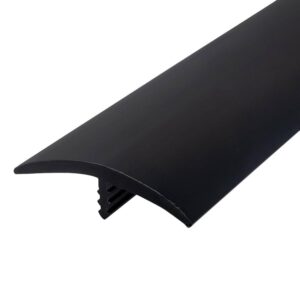
Medical Devices: Precision Rubber Molding
Precision rubber molding is widely used in the medical industry where it is used to manufacture parts such as gaskets, seals, and tubing for use in medical equipment. Each of these components needs to undergo some tests that would prove that the product is safe to use and it works.
A medical device maker approached a molded rubber parts manufacturer that specializes in making rubber molds for a new line of diagnostic equipment it intended to launch. The components had to be compliant with the FDA and also conform to the ISO 13485 standards of medical device quality management. The resulting rubber moldings provided reliable, long-lasting performance, crucial for the sensitive nature of medical applications.
Sports Equipment: Rubber Moldings that are built to last
Rubber moldings are also used in the manufacturing of sports equipment since the item has to be durable and perform optimally. In protective gear and equipment parts, rubber is used where the required characteristics are flexibility and elasticity.
A well-known sports equipment company developed and applied custom molded rubber parts to create high-quality grips for tennis rackets. Through the use of natural and synthetic rubber blends, they were able to produce a product that not only met but exceeded the grip and comfort standards set by the International Tennis Federation (ITF). Athletes reported improved control and reduced hand fatigue, highlighting the significance of high-quality rubber moldings in enhancing sports equipment performance. This innovation underscores how custom molded rubber parts can directly impact athlete performance and satisfaction in competitive sports.
Environmental Sustainability: Eco Friendly Rubber Moldings
With the rising emphasis on sustainability, rubber manufacturing companies are shifting their attention ecofriendly rubber moldings. These products are produced from recycled or eco-friendly material, thus making them friendly to the environment.
A company that deals with environmentally friendly products launched rubber floor trim molding produced from recycled rubber. This was environmentally friendly and assisted builders to attain LEED certification for green building standards. The moldings also helped in environmental conservation while at the same time providing a good performance in terms of strength and safety.
Aerospace Innovations: High-Performance Rubber Components
In the aerospace industry, rubber components must withstand extreme conditions while maintaining their integrity. High-performance rubber moldings are used in applications ranging from seals and gaskets to insulation and vibration dampening.
An aerospace company collaborated with rubber parts manufacturers to develop specialized rubber moldings for aircraft engines. These components had to meet stringent standards, such as SAE AMS 3205, ensuring they could endure high temperatures and pressures. The successful implementation of these rubber moldings contributed to improved engine performance and reliability.
Electrical Applications:
Rubber moldings are crucial in electrical applications, providing insulation and protection for wires, cables, and electronic components. These moldings prevent electrical shorts and enhance the safety and longevity of electronic devices.
An electronics manufacturer applied custom rubber corner molding in their products to safeguard sensitive parts. The moldings complied with the Underwriters Laboratories’ UL 94 flammability rating to guarantee that they offered adequate insulation and protection.
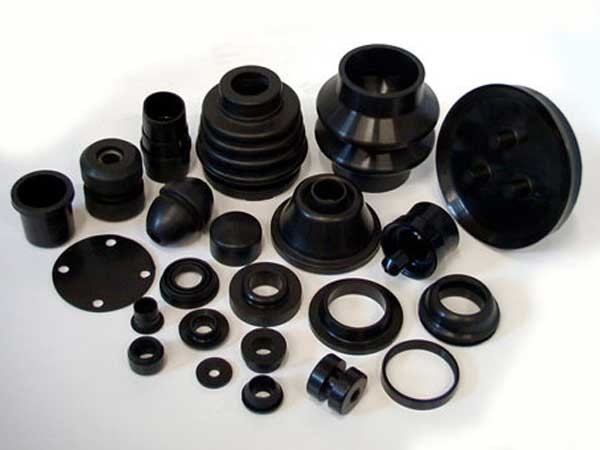
Agricultural Equipment: High-Durability Rubber Moldings
In the agricultural sector, rubber moldings are applied to tractors and other farming equipment, machinery to reduce wear and enhance efficiency. These moldings must withstand harsh environmental conditions and heavy use.
A rubber parts manufacturer specializing in agricultural machinery utilized high-quality rubber moldings to extend the lifespan of their products. These moldings met ASTM D2240 requirements for hardness, ensuring they could endure the rigorous demands of agricultural use. As a result, farmers experienced fewer equipment breakdowns and significantly longer equipment life.
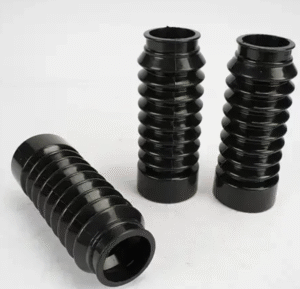
Choosing the right rubber compound for your project involves understanding different rubber types, considering environmental and stress factors, and balancing performance with cost. Various rubber compounds offer unique properties suitable for specific applications, from EPDM’s weather resistance to silicone’s flexibility. Evaluating environmental conditions and mechanical stresses ensures your molded rubber parts maintain integrity. Balancing performance and cost is crucial, with careful selection of rubber molding processes and materials. Real-world case studies, such as custom grips for sports equipment, highlight the importance of precise rubber moldings in meeting industry standards. The right choice can enhance product performance and customer satisfaction in rubber industries.
